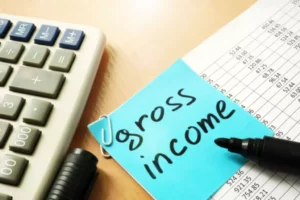Taxes are obligatory payments of individuals and legal entities to the government. There are two types of taxation systems. With a progressive tax structure, the tax owed to the government is calculated using a rate that increases as soon as the individual’s earnings go over a specific level. Thus, the US federal tax on the income ranges from 10% to 39.6% and the rich pay more than the poor.
What is Progressive Tax?
A progressive tax means that its rate goes up as earnings rise. The higher the earnings, the greater the percentage that the IRS or another similar organization takes on behalf of the government. In England, for instance, a citizen pays 20% tax on incomes up to £46,000 a year, 40% on incomes from £46,000 to £150,000, and 45% on incomes over £150,000. Countries with a progressive taxation structure include the USA, UK, Germany, France, China, and others.
Advantages and Disadvantages
One can say that the main advantage of the progressive tax is that the main tax burden falls on the rich, and the poor pay less taxes. Its supporters believe it leads to a more fair redistribution of income. With this tax structure, people pay taxes according to their abilities. Individuals who are poor can afford to give a very little percentage of their income towards taxes, whereas people who earn significantly more can afford to pay a relatively large percentage of their earnings in the form of taxes.
The progressive tax rate allows the government to maximize the amount that it can tax individuals at. If the government chose to tax everyone at the high rate they tax the wealthy taxpayers, poor citizens would struggle. If the government, on the other hand, taxed everyone at a low rate, it would make very little revenue and would not be able to meet the needs of the citizens and many programs and support systems would be stopped or limited.
This system is not without downsides. It is considered to be less fair by individuals who believe that tax payments should be equal for everyone. The main reason for this is that people believe that such a system in a way punishes individuals for making an effort to earn more and be successful. Furthermore, this removes the motivation for innovation and entrepreneurship.
Nonetheless, many countries have successfully used some sort of progressive taxation system. For instance, the Danish income tax rate ranges from 8 to 56%. Denmark has always been in the top 5 countries with the highest tax rate in Europe. As in the US, the tax system there began to develop actively in the last century.
Along with the USA and Denmark, developed countries such as France, Germany, and Belgium can also be noted. The success of the progressive tax rate lies not in tax rates, but in the organization of the tax system of these countries as a whole. A common feature is that the taxation rules and overall system in these countries have developed over many years.
Comparison with Other Tax Systems
In comparison to progressive taxation, the flat tax system implies that everyone pays the same percentage of income to the government, regardless of the level of that income. For example, at a tax rate of 13%, a taxpayer with an income of $125,000 pays $16,250 in taxes. A citizen with an income of $50,000 has to pay $6,500. The tax rate is fixed. It does not change.
One of the advantages of a flat rate is the simplicity and convenience of calculating the taxes owed because the tax rate (or even a specific amount) is always the same. Another advantage is that taxpayers are always motivated to earn more – the tax will not increase if a person has earned more money.
In comparison, at a progressive tax rate, a small increase in income can significantly increase the tax rate, and the person will end up poorer, not richer. Some consider flat taxation to be unfair. In their opinion, the rich should bear a larger tax burden. Their excess earnings should be distributed for the needs of the whole society.
There is also an opposite tax system known as regressive taxation. Regressive taxation means that the rate decreases as income or other taxable earnings increase. The simplest example is a fixed tax amount that everyone pays equally. It turns out that for the rich it is a lower percentage of their income, for the poor – a larger percentage. Since these taxes are the easiest to calculate and collect, they have been used extensively in the past.
Today, with regressive taxation, income is usually divided into parts, each of which is taxed at its own rate: reduced rates are not valid for the entire taxed income, but for the portion that exceeds the previous one. Indirect taxes are also regressive in nature. An excise tax, for example, is included in the price of some goods. For the rich, it is a small percentage of income, for the poor, it is a more significant part of their earnings.
The advantage of the regressive tax system is that it encourages an increase in income – the richer a person becomes, the less noticeable the tax is. Also, a regressive tax can encourage certain types of income: for example, investment income. The main disadvantage of regressive taxation is that the tax burden falls on people with low incomes.


















